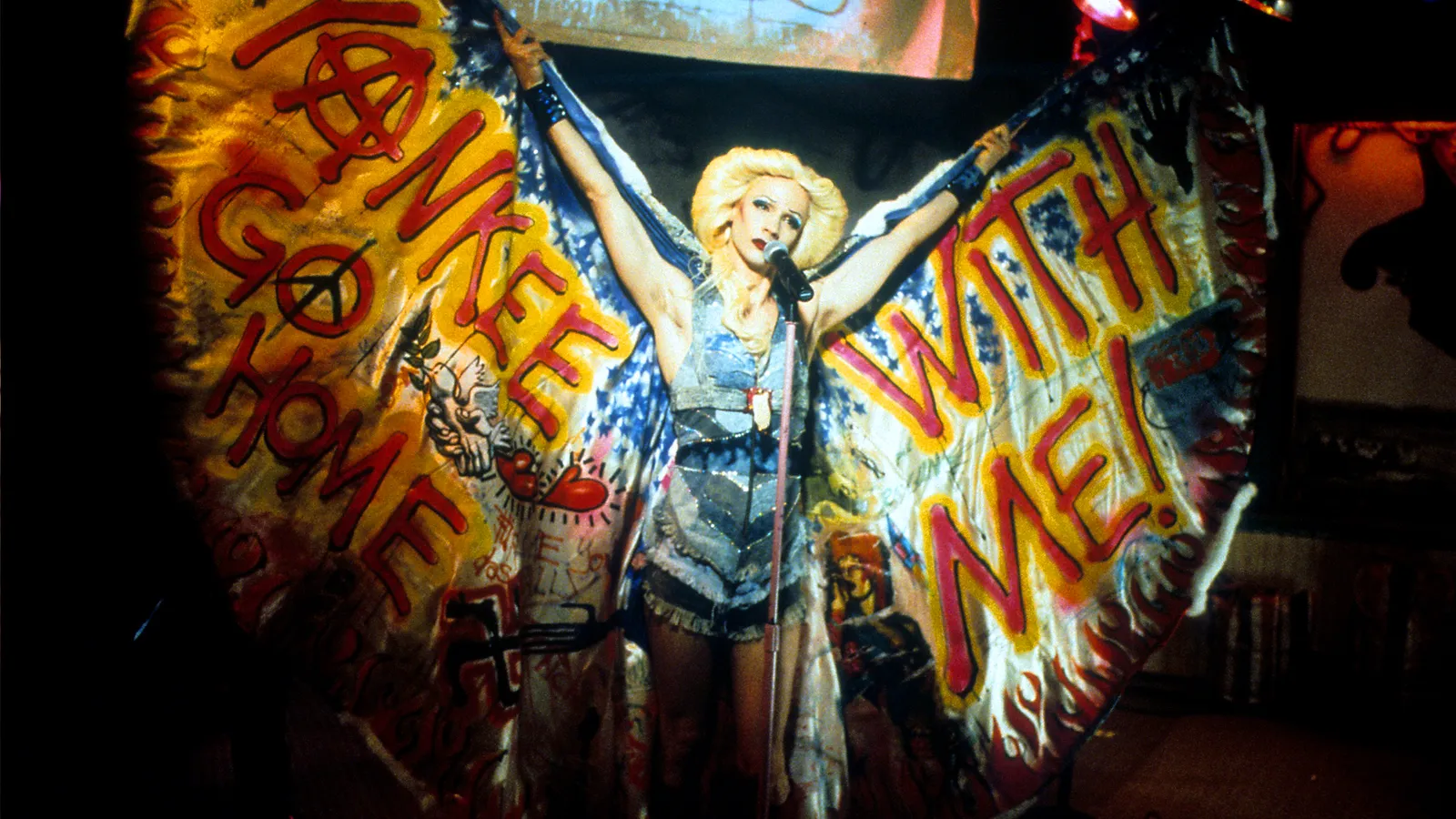The path to creating Hedwig began with, of all things, a biography of a New German Cinema icon. Hedwig’s co-creator, original star and director of the film John Cameron Mitchell tells BBC Culture, «I wanted to write a musical that was rock and roll with a punk edge, I’d seen a lot of so-called rock musicals that didn’t feel authentic and I knew that the myth of the origin of love from Plato would be the central metaphor. I had a few characters I was thinking about and I met Stephen Trask on a plane. Stephen was probably coming on to me and moved to one seat away and plopped a Rainer Werner Fassbinder biography on the seat between us. It’s probably never happened before or since that Fassbinder was an ice-breaker.»
After going to see each other’s work, a creative partnership was formed and the characters began to emerge. «I would tell Stephen stories about my life. One of them was about a babysitter I had, Helga, a German army wife who I realised in retrospect was also a prostitute. She became the seed of Hedwig and Tommy came from me as the son of a general. Stephen was the house band leader at Squeezebox so drag queens would do punk-rock covers with him. That’s where I did my first gig – because it was a drag club, I had to do the female character, Helga, who became Hedwig.»
Once the story had been formed and the songs and lyrics written, the path to success for Hedwig and the Angry Inch was not an easy one and, much like the character, Mitchell and Trask struggled to find an audience, performing it in tiny venues or in the early hours of the morning. Even when, with the help of director Peter Askin, Hedwig made it to off-Broadway, the audience didn’t immediately find them. «People stayed away in droves,» Mitchell laughs. «We often had very silent audiences, but it wasn’t until people who didn’t like musicals started coming, and celebrities like Glenn Close, Patti LuPone, Marilyn Manson, Barry Manilow, Lou Reed and David Bowie started coming, it became the thing to see. Even though we were never a big hit, we became the hip thing. Then there was a bidding war for the movie, which was shocking to us. New Line [who ended up producing it] was one of the few companies run by one person, Bob Shaye; he was getting ready to do Lord of the Rings and allowed me to make the film the way I wanted.»
One of the most impressive things about the film they would go on to create is how, as Bogutskaya puts it, «the film uses cinematic language quite uniquely and uses the medium that it’s in to its full extent. It’s not just trying to film the show or replicate it.» The film creates a larger landscape to explore Hedwig’s journey but also recreates the atmosphere of its early days as an electrifying live performance. It premiered at Sundance in 2001 to a rapturous reception, winning a prize for Best Director and the much-coveted Audience Award.
But, amazingly, it was while the Hedwig team were still at Sundance that things started to go wrong for the film. «We were in a weird spot because there was a changing of the guard at New Line while we were at Sundance. All of our producers were fired.» Trask remembers. «We were walking down the street at Sundance when our producer got a phone call from the new head of production who said, ‘Hey, I just want to congratulate you on having this big success with Hedwig. I still need to tell you that, despite that, if I had been in charge then like I am now, this movie would not have been made and you’re fired’ – she was literally fired while walking down the street with us. The new people in charge actively hated the movie so we had to depend entirely on free publicity, which meant getting into every film festival possible. We did dozens, if not a hundred, film festivals and we were huge hits at all of them – but by the time it came out, we had been at so many film festivals that tens of thousands of people had already seen it. And then when we were getting ready to do our expansion, very sadly, September 11th happened and everyone stopped going to the [cinema].»
So, despite awards and critical acclaim (Hedwig currently has a rating of 92% on Rotten Tomatoes), Hedwig was declared a flop. And it was not until the DVD release that its audience began to grow. Hedwig DVDs were passed around friend groups, watched on date nights and played at parties. Much like in its original theatrical incarnation, word of mouth and its intriguing hipness brought Hedwig to a whole new group of people who would then attend singalong screenings in Hedwig’s signature giant blonde wigs.

